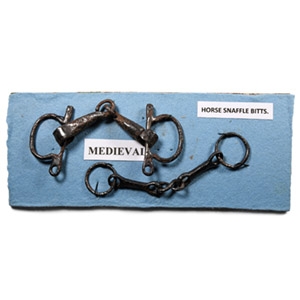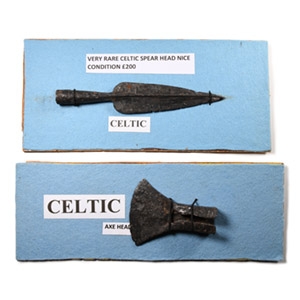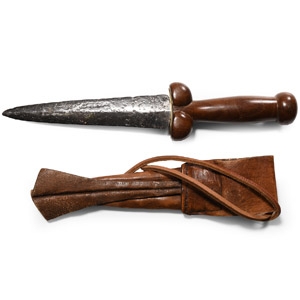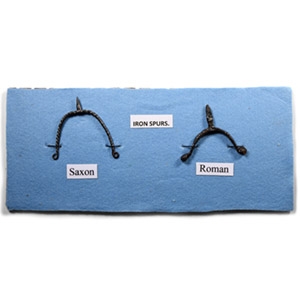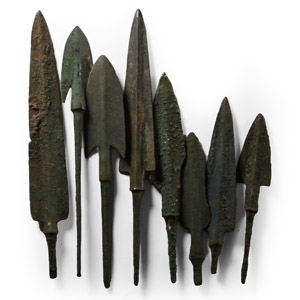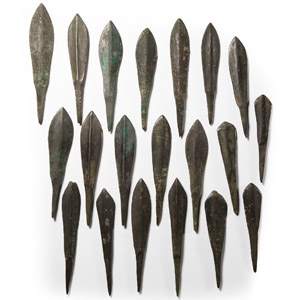Home > Auctions > 3 - 8 September 2024
Ancient Art, Antiquities, Natural History & Coins
Auction Highlights:
From a military inspired collection formed from the 1990s.
Accompanied by an academic paper by military specialist Dr Raffaele D'Amato, dated 15 July 2019 and titled 'Eastern Roman Empire - Greek Fire Bomb or Hand Grenade (μεσαίον kακάβιον) 9th-11th century AD'.
Cf. Arendt, W. I., Granaten des 13-14. Jahrhunderts, die an der Wolga gefunden sind, Zeitschrift fur Historische Waffen-und Kostumkunde, 11 (1926-8), p.42; cf. Arendt, W., Die Spharisch-konischen Gefäße aus Gebranntem Ton, ibid; cf. Ayalon, D., Gunpowder and Firearms in the Mamluk Kingdom, London, 1956, p.16.
Apart from the use of siphons or manual flame-throwers called cheirosiphona, special corps of Roman soldiers employed terracotta grenades, in the form of small jars, abundantly evidenced in archaeological excavations. They were called μεσαία kακαβιά or κυτροκακάβια where the former had a bulbous shape and the latter a more cylindrical form.
From a specialist collection of militaria, London, UK, collected 1990s onwards.
Accompanied by an academic paper by military specialist Dr Raffaele D'Amato, dated 15 July 2019 and titled 'Eastern Roman Empire - Greek Fire Bomb or Hand Grenade (μεσαίον kακάβιον) 9th-11th century AD'.
Cf. Arendt, W. I., Granaten des 13-14. Jahrhunderts, die an der Wolga gefunden sind, Zeitschrift fur Historische Waffen-und Kostumkunde, 11 (1926-8), p.42; cf. Arendt, W., Die Spharisch-konischen Gefäße aus Gebranntem Ton, ibid; cf. Ayalon, D., Gunpowder and Firearms in the Mamluk Kingdom, London, 1956, p.16.
Apart from the use of siphons or manual flame-throwers called cheirosiphona, special corps of Roman soldiers employed terracotta grenades, in the form of small jars, abundantly evidenced in archaeological excavations. They were called μεσαία kακαβιά or κυτροκακάβια where the former had a bulbous shape and the latter a more cylindrical form.
Ex London, UK, collection, 1990s.
Some texts related to ancient Mesopotamian wound dressing give detailed instructions for surgery with a scalpel, including post-operative care such as the dressing of operations sites with oilsoaked linen bandages. One scantily described operation is the cutting between the third and fourth ribs, counting from inferior to superior, to relieve pus collection in the pleura or liver.
UK gallery, early 2000s.
From a military inspired collection formed from the 1990s.
Accompanied by an academic paper by military specialist Dr Raffaele D'Amato, dated 15 July 2019 and titled 'Eastern Roman Empire - Greek Fire Bomb or Hand Grenade (μεσαίον kακάβιον) 9th-11th century AD'.
Cf. Arendt, W. I., Granaten des 13-14. Jahrhunderts, die an der Wolga gefunden sind, Zeitschrift fur Historische Waffen-und Kostumkunde, 11 (1926-8), p.42; cf. Arendt, W., Die Spharisch-konischen Gefäße aus Gebranntem Ton, ibid; cf. Ayalon, D., Gunpowder and Firearms in the Mamluk Kingdom, London, 1956, p.16.
Apart from the use of siphons or manual flame-throwers called cheirosiphona, special corps of Roman soldiers employed terracotta grenades, in the form of small jars, abundantly evidenced in archaeological excavations. They were called μεσαία kακαβιά or κυτροκακάβια where the former had a bulbous shape and the latter a more cylindrical form.
From the private collection of a London gentleman, from his grandfather's collection formed before the early 1970s.
Cf. Žákovský, P., ‘Caltrop. Contribution to the knowledge of one neglected weapon’ in Studia Minora Facultatis Philosophicae Universitatis Brunensis, M 12-13, 2007-2008, pp.115-132, fig.9, nos.2,3,4,5 (type 3 of Žákovský classification).
P. Žákovský has been able to classify medieval caltrops, mainly from the 13th to 15th century A.D., on the basis of their morphology, into four main typologies, each with different variants. Caltrops with single-pointed spikes, whose interpretation, however, is often ambiguous belong to type I. The other three types represent classic four-pointed caltrops, and individual types in this group differ from one another just in their cross-section.
From the collection of the famous author, writer and speaker, Gordon Bailey, Essex, UK; formed since 1968.
From the collection of the famous author, writer and speaker, Gordon Bailey, Essex, UK; formed since 1968.
Cf. Allen, S., Celtic Warrior 300 BC-AD 100, Oxford, 2001, p.51, and plates A and E, for similar specimens.
The Celtic warrior used a light javelin to throw and a heavier thrusting spear at close quarters. An iron spearhead of identical shape but with bronze decoration was recovered from the Thames and dated to the late Iron Age.
From the collection of the famous author, writer and speaker, Gordon Bailey, Essex, UK; formed since 1968.
From the collection of the famous author, writer and speaker, Gordon Bailey, Essex, UK; formed since 1968.
Cf. De Shortt, H., ‘A provincial Roman spur from Longstock, Hants, and other spurs from Roman Britain,’ in The Antiquaries Journal, volume 39 issue 12, Cambridge, 1959, pp.61-76, fig.22 (Hod Hill) and 25 (Hadrian’s Wall), for similar Roman spurs.
Bailey, G., Detector Finds 5 Witham, 2002, p.32, fig.1, for the Saxon spur.
The Romans employed a light spur (calcar) made of bronze or iron, U-shaped and barely covering the heel. To the rear of the spur was a small point, and this form continued to be in use through the early Medieval period. The Saxon spurs were very similar to the Roman examples, although slightly larger and with a more spiked point.
Ex London collection, formed 1990-2000.
UK private collection before 2000.
Acquired on the UK art market.
Property of a London gentleman.
Cf. for similar arrow-points Gorelik, M., Weapons of Ancient East, IV millennium BC-IV century BC, Saint Petersburg, 2003, in Russian, (plate XLIII, nos.26-27, 92-93).
These kind of arrowheads were typical of the Old Babylonian Empire. The shoulders were pronounced and the arrowhead had a rectangular-section tapering tang. This simple form was popular throughout and show comparative common finds in the Holy Land.
1069 - 1080 of 3369 LOTS

.jpg)

.jpg)
.jpg)
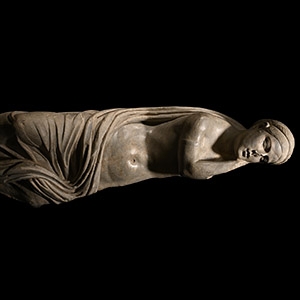
.jpg)
.jpg)

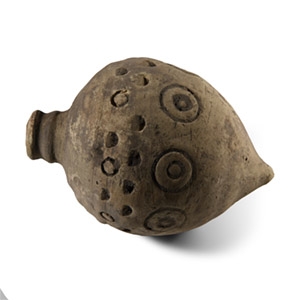


.jpg)


